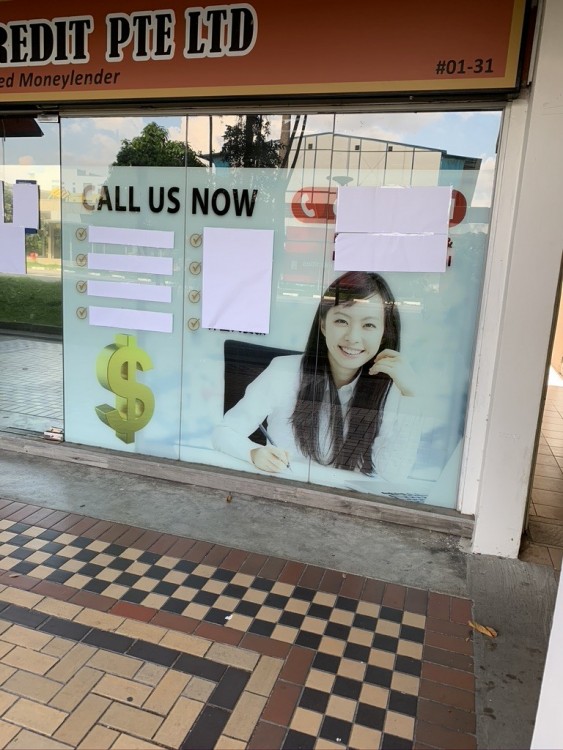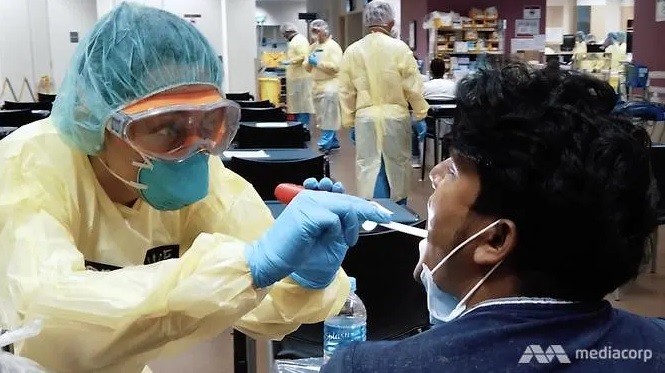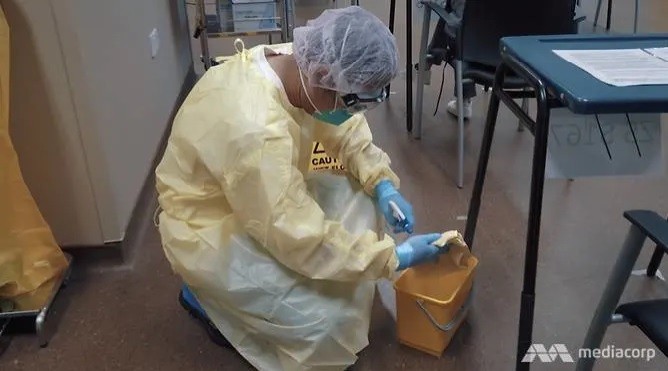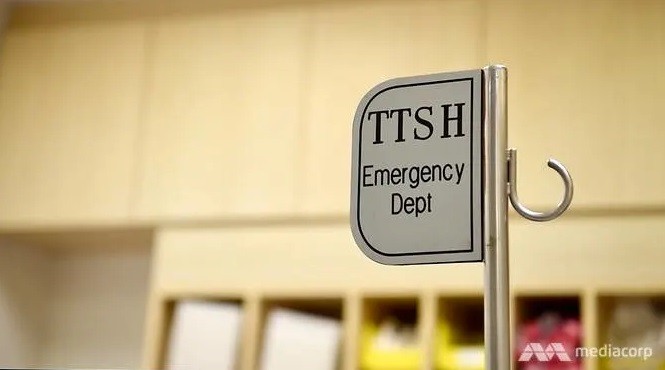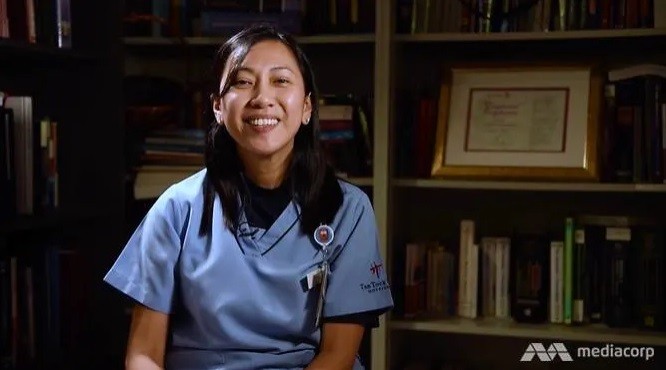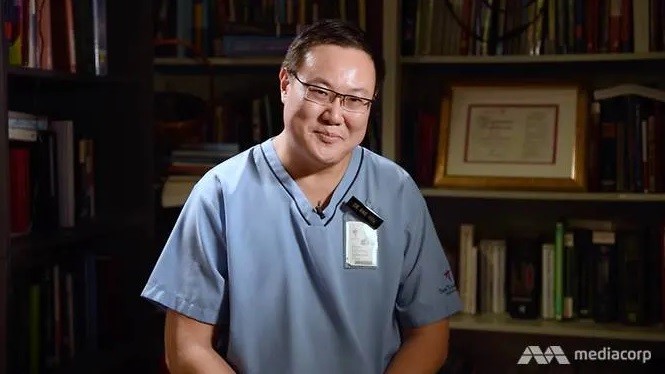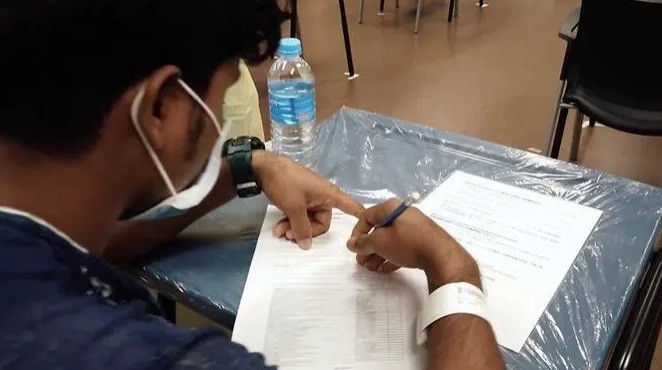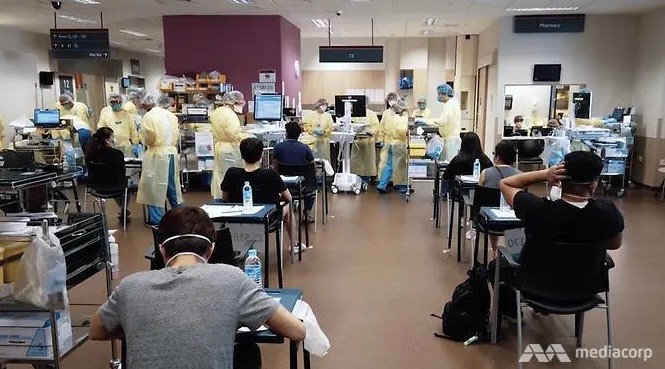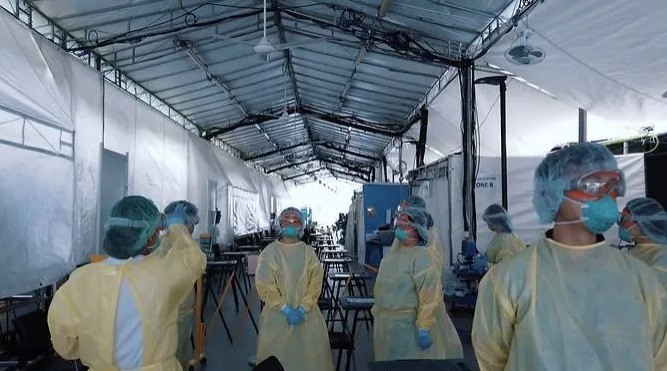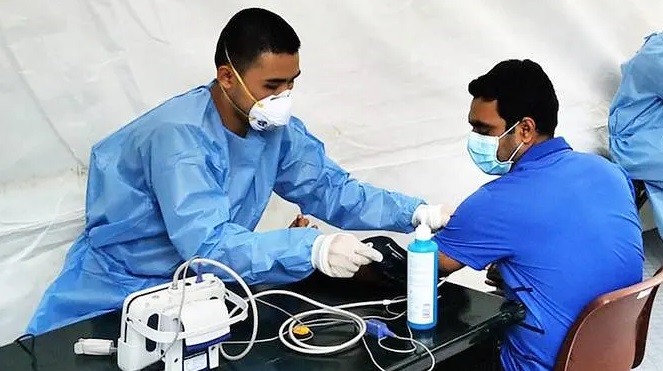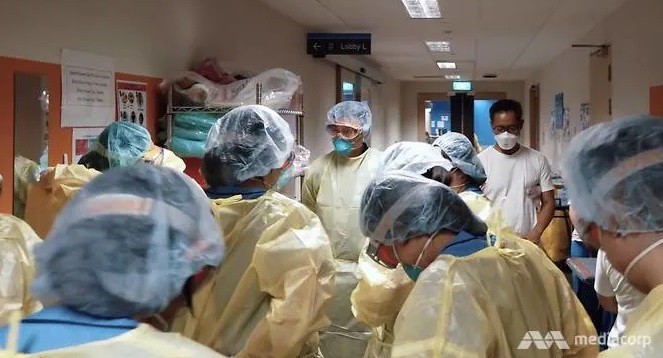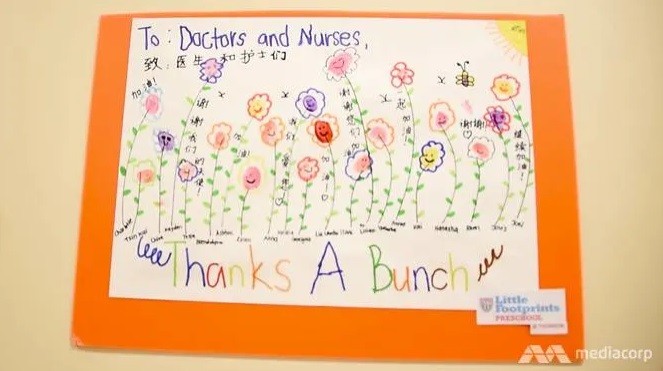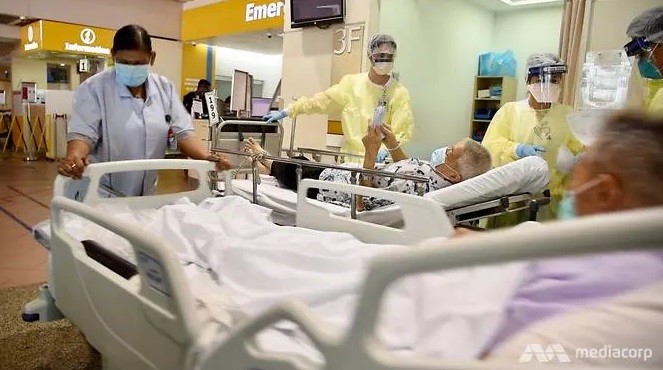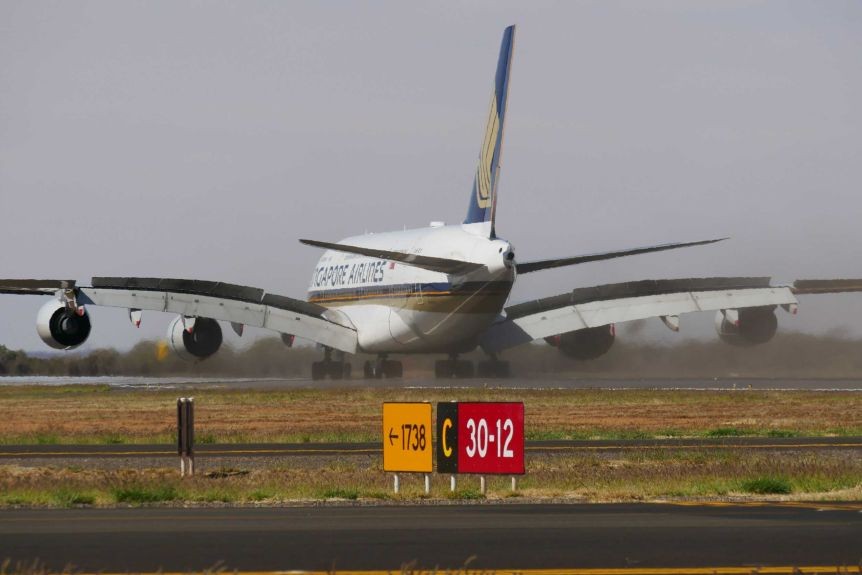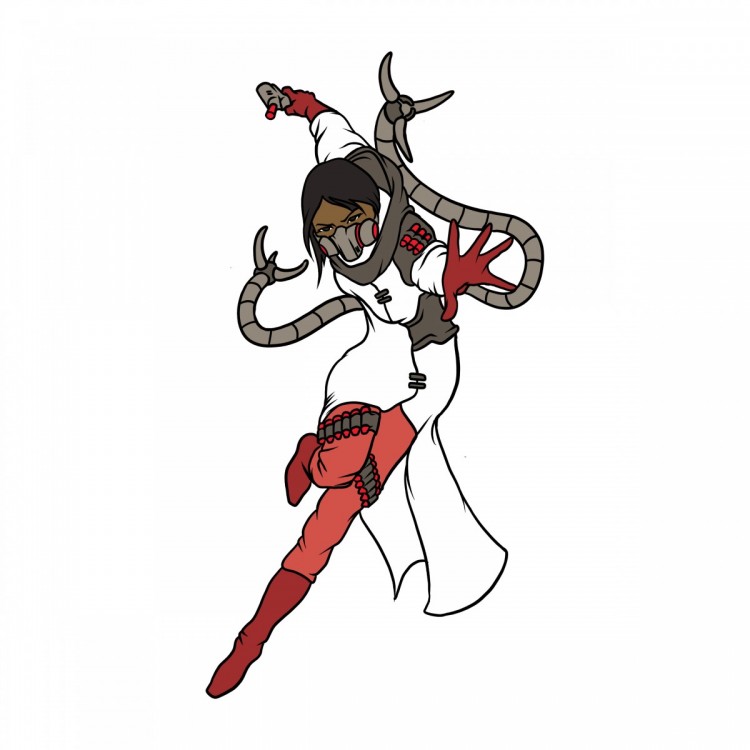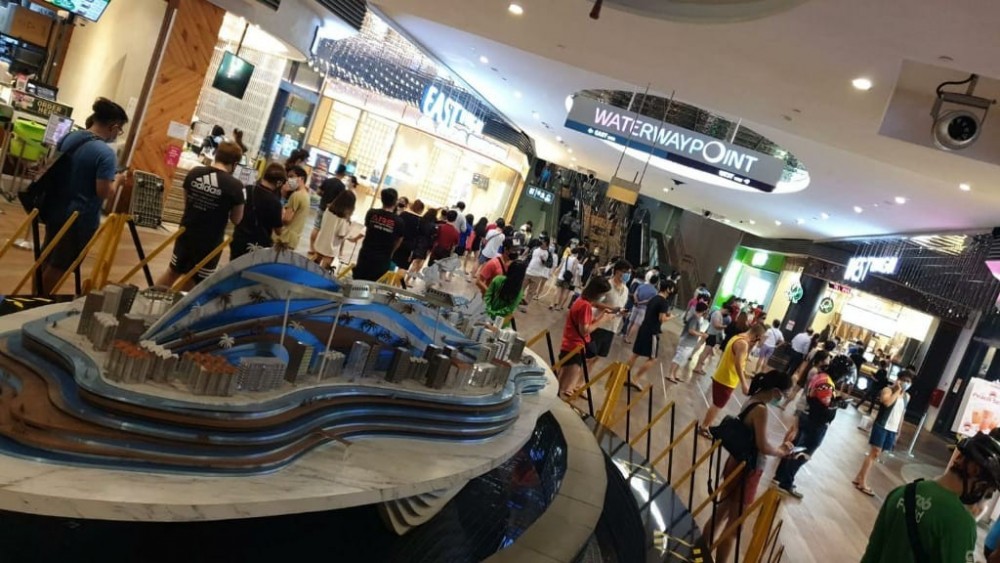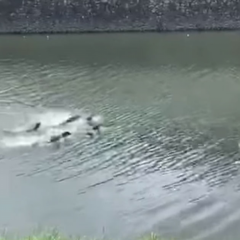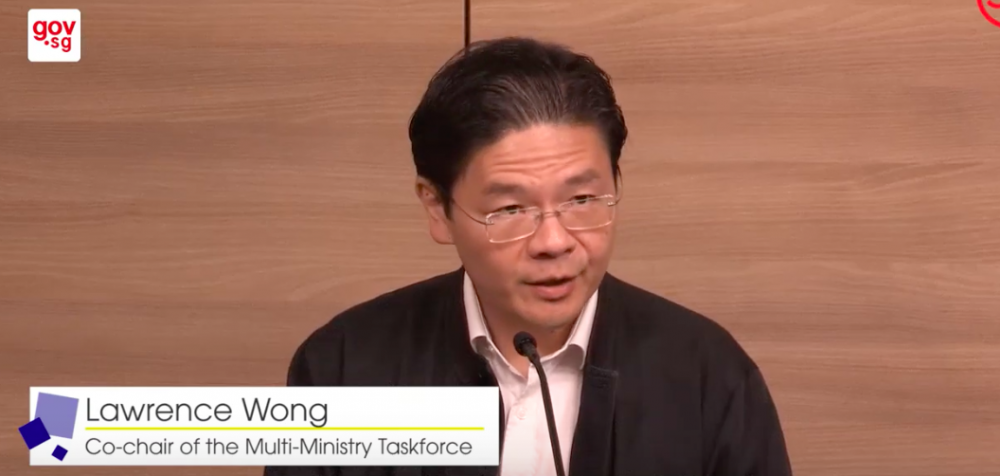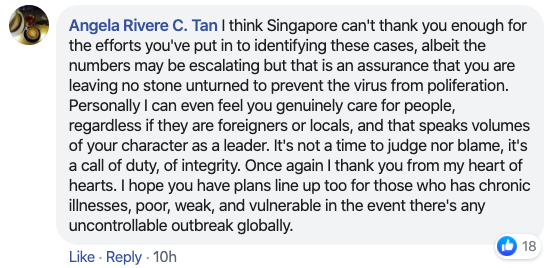Search the Community
Showing results for tags 'covid-19'.
-
Latest "casualty" of the COVID-19 outbreak... THE GENEVA INTERNATIONAL MOTOR SHOW IS CANCELLED! #GIMSSWISS 5-15 March 2020 The 90th edition of the GIMS, which was supposed to welcome the media from next Monday and the general public from 5 to 15 March 2020, will now finally not take place. This is an injonction decision of the Federal Council of 28 February 2020 that no events with more than 1,000 people are allowed to take place until 15 March 2020. The decision falls 3 days before the opening of the exhibition to the media. The organizers accept this decision: "We regret this situation, but the health of all participants is our and our exhibitors' top priority. This is a case of force majeure and a tremendous loss for the manufacturers who have invested massively in their presence in Geneva. However, we are convinced that they will understand this decision," said Maurice Turrettini, Chairman of the Foundation Board. We would like to warmly thank all those involved in the organisation of the 2020 edition of GIMS. A few days before the opening of the event, the construction of the stands was very nearly complete. A week ago, during the press conferences announcing the 2020 edition, there was nothing to suggest that such a measure was necessary. The situation changed with the appearance of the first confirmed coronavirus diseases in Switzerland and the injonction of the Federal Council on 28.02.2020. The event is cancelled due to this decision. In the meantime, the dismantling of the event will now have to be organised. The financial consequences for all those involved in the event are significant and will need to be assessed over the coming weeks. One thing is certain: tickets already purchased for the event will be refunded. The organisers will communicate about this as soon as possible, via their website. Palexpo, 28 February 2020
- 23 replies
-
- 10
-

-

-
- geneva
- motor show
-
(and 7 more)
Tagged with:
-
Just now I was buying breakfast and I chanced upon a licensed moneylender. And I realised that they covered their "marketing message" from the stall outside. I am wondering what is the reason behind this. 🙃 Just for my little curious brain. 🤨
- 36 replies
-
- 2
-

-
- moneylender
- licensed
-
(and 1 more)
Tagged with:
-
I have heard friends around me getting pay cuts or retrenched. Anyone of you had similar experience. What if company retrench us during this period?
- 200 replies
-
- retrenchment
- pay cut
-
(and 2 more)
Tagged with:
-
BREAKING: PM Lee to address the nation at 5pm today. Live broadcast on TV and radio https://www.facebook.com/leehsienloong/ PM LEE ANNOUNCEMENTS & MULTI MINISTRY PRESS CONFERENCE VIDEOS ADDED BY BABYBLADE PM Lee Hsien Loong on the COVID-19 situation in Singapore on 21 April 2020 COVID-19 circuit breaker: Singapore announces entry limits to some wet markets Could Singapore have done more to prevent the COVID-19 spike among foreign workers in dormitories? COVID-19: Foreign workers living in dorms have to stop working, says Josephine Teo Why Singapore authorities want you to go out alone, amid tighter COVID-19 circuit breaker measures Singapore extends COVID-19 circuit breaker period until June 1
- 4,331 replies
-
- 2
-

-
- covid-19
- coronavirus
-
(and 5 more)
Tagged with:
-
10, 20 years from now, we want to remember the faces behind the success of defeating COVID-19. No doubt about it, we will win the fight against the virus. Here's a thread out of the many COVID-19 ones, to remember the people behind our success. From Doctors, Nurses, Cleaners, Social Distancing Ambassadors, SPF, SAF, SCDF, NEA, ICA, MFA ... Let's share stories about these angels. Here's one from NCID to start. Inside Singapore’s COVID-19 screening centre, on the front line against the disease As the number of cases continues to rise, it is all hands on deck at Tan Tock Seng Hospital and the National Centre for Infectious Diseases, where doctors, nurses and other healthcare workers screen hundreds of patients daily. SINGAPORE: At the National Centre for Infectious Diseases (NCID) screening centre, one important part of the defence against the pandemic has been none other than ice cream. Charmaine Manauis is hardly joking when she says that. She is the lead consultant in infectious diseases at Tan Tock Seng Hospital’s emergency department, which is in charge of the screening effort. “Ice cream is important; it makes us happy. You see everyone — they have ice cream, they perk up,” the doctor said about her colleagues, and herself. “Plus, it’s hot inside the personal protective equipment. So they love eating ice cream (in the pantry) during their break.” She is certainly not kidding about feeling the heat under their yellow gowns, shower caps, gloves, goggles and N95 masks, which they wear throughout their seven- to 10-hour shifts, except during breaks. “When I remove my yellow gown, I’m usually drenched. It’s really hot,” she said. “When I remove (my mask), then I feel as if I can breathe again.” That is how it has been for the staff running both the TTSH emergency department and the NCID screening centre in the time of the coronavirus. And it is not just emergency doctors who are seeing to the suspected COVID-19 cases. While their department used to have about 20 doctors on shift at any time in the day, it has been a whole new ballgame since Chinese New Year. Hundreds of doctors across different specialities in the hospital — from urology to ENT (ear, nose and throat) to plastic surgery — are being mobilised for training so they can carry out COVID-19 duties too. Since Singapore’s first confirmed case on Jan 23, more than 400 doctors from the hospital have been rostered to work at the NCID screening centre across the road. And the one co-ordinating their training is Manauis, the senior consultant leading the screening efforts — as CNA Insider finds out in an inside look at the frontline battle against COVID-19. GETTING WIND OF THE VIRUS ON HOLIDAY The 42-year-old as well as her boss — Adjunct Assistant Professor Ang Hou, head of the emergency department — were on holiday in December when they first heard of a mysterious disease in Wuhan. “I said, ‘Hm, this might be something.’ So when I came back, the department had already started screening,” recounted Manauis. “We started screening for (travellers from) Wuhan on Jan 2.” That was the day Singapore’s Ministry of Health (MOH) announced that it was monitoring the pneumonia outbreak closely, and sent a circular to medical practitioners here. Whispers of the severe acute respiratory syndrome (SARS) started “floating around” TTSH. “We were SARS central back in 2003, so that’s never left the DNA of the department,” said Ang. “You can’t help but relive memories that you’ve been through, especially when you know your colleagues and your friends had been affected very deeply.” The possibility of a second coming did not surprise him, however. “We were always anticipating something like COVID-19 ... We knew that it wouldn’t be a matter of if, but when,” he said. “We knew that by the time it were to come from Wuhan to Singapore, it would’ve been ... a significant outbreak in the world or at least in this part of the region.” The department started screening for the novel coronavirus (SARS-CoV-2) in a “very small, dedicated space”. But even “way before” Singapore’s Disease Outbreak Response System Condition alert was raised to orange, the number of people coming every day “was growing to a scale that we had to move out of (that) physical space”, he added. As the rest of the country wound down for Chinese New Year, furniture had to be moved in, and computers set up, for the NCID screening centre to be activated. “It was a very busy Chinese New Year for a lot of people, not because we were going around celebrating but because we were preparing for the next phase in screening,” said Ang. By Jan 29, the screening centre was up and running round the clock. FROM SCREENING CENTRE TO TENT Those first few weeks of the centre’s operations were “really hectic” for Manauis. “We were on call 24/7. Every Saturday, we’d train (staff). During the week, we’d look at protocols — we’d look at whether our processes were working well, whether we had to manage any choke points in the screening centre,” she recounted. One of those choke points were the X-ray rooms. “If the screening centre was full, then there’d be a queue for X-rays. And so we’d need more efficiency, more radiographers,” she said. Based on the travel history and the chest X-ray results, the doctors had to decide whether the patients had to be warded or could be discharged. For those who needed admission, those were uncertain times. They had many questions. “How long will I stay? What tests will they be doing for me upstairs? How about my family? Do they need to be admitted too?” cited Manauis. The numbers coming for screening kept rising until the load “became quite difficult at one point”, said Ang. That came about when the MOH changed the definition of a suspect case, following the transmission of the coronavirus at a health products shop visited by Chinese tourists. “That led to a lot of patients being referred by their doctors for screening because they’d come into close and frequent contact with travellers from China,” said Ang. “A lot of people in various industries came in, whether they were taxi drivers, tour bus drivers, people who worked in tourist attractions or hotels, airports and casinos. They were all flooding in.” So, after consulting the ministry, TTSH proceeded to swab and discharge these patients, “to conserve beds for patients who were really ill and needed treatment”. Then there was “a strange point in time”, when the number of people coming for screening and the cases confirmed as positive slowed down, even as the numbers were picking up in the rest of the world. “We knew that the numbers would go up sooner or later,” said Ang. “We knew that the screening centre might not be able to cope ... so we made the decision together with the ministry to set up a tentage, to expand the number of places available.” That ended up being the case. On March 23, the TTSH team screened the highest number of people until now: More than 520. “We call it the most terrible Monday,” said Manauis. “The patients came in the afternoon and at night. And at night, we have less manpower. We had to open the tentage until 3am, with a lot of patients having to wait a little bit longer. So that was a struggle.” MIGRANT WORKERS A NEW CHALLENGE There are still hundreds of patients screened daily, although the challenge as of late is not the numbers but the space needed, as the spike has been among migrant workers, and the tent outside the screening centre is “perennially full”. “For these foreign workers, we need to wait for swab results before they can be discharged (if they test negative). So we need a bigger waiting area for them,” said Manauis. “After that, they have to wait for transport also, to bring them back to their dorms. So they can wait for as long as, probably, 18 (to) 20 hours.” WATCH: An exclusive look inside the NCID screening centre (Dur 5:20) While there are now Swab Isolation Facilities like the CherryLoft chalets — where the workers can be sent after their nose swabs — these facilities “are quite full” nowadays, she added. The workers are otherwise unable to self-isolate. "Every day, we’d have to ask whether there’s any vacancy, and then they still need to wait for an ambulance or dedicated transport." While there is swabbing done at the dormitories now, some of the workers need to go to the screening centre depending on their symptoms. If they complain of chest pain or have difficulty breathing, for example, then they need an X-ray, a blood test or an electrocardiogram. As long as they are symptomatic or have had close contact with a positive case of COVID-19, they should be swabbed. An MOH circular sent on Thursday has also updated the swabbing criteria for everyone. Anosmia — the loss of the sense of smell, either total or partial — is now one of the symptoms to look out for, cited Manauis. “There were (research) papers that came out, and there were positive cases which presented only with anosmia,” she explained. The other symptoms still include fever, runny nose, cough, sore throat and gastrointestinal symptoms like diarrhoea or vomiting. Since she started on TTSH’s clinical protocols and work instructions for COVID-19 screening and infection controls, Manauis has developed 61 versions for the staff to follow. There is also a workflow for the foreign workers from dormitories, which is at version 17 now. IN FOR THE LONG HAUL She has also trained nine batches of doctors from various departments, with as many as 51 physicians in a batch. They work a 10-day cycle as part of a group of more than 100 people, including nurses and other healthcare workers, running the screening centre. Most of them, even senior specialists, are volunteers, and some have done more than one rotation, although each department is also supposed to contribute a certain amount of manpower. “Screening is very different from what they do every day. So it wasn’t a surprise that they were a little bit apprehensive. But they were very willing to help out,” said Manauis. She is grateful for all the support. At one of the training sessions this month, she told the doctors: “We really need your help on the front line. On behalf of the emergency department, I thank you guys for volunteering.” The thing is, her department is not only working at the screening centre, but also attending to the usual emergency cases. To do this, the staff have cancelled their leave and reduced their days off. “You just have to do your work. I go day by day — whatever needs to be done, needs to be done,” she said with a shrug. “Everyone’s made sacrifices, not only me or not only the doctors ... But we do this willingly because we know that this is our job.” The emergency cases are tended to in a different zone, although that does not mean the staff necessarily get to dispense with personal protective equipment. The forward screening triage nurses, for example, must wear the full equipment. “Sometimes walk-in patients ... are close contacts (of a COVID-19 case), so we have to protect our frontline staff,” said Manauis. To protect the patients as well, one of the changes made is to ensure that they queue at least two metres apart. This, and many of the current arrangements in the emergency department, could be in place for some time. “For those of us who’ve been here for a while, who’ve gone through other outbreaks, we know that, potentially, it’s going to be long-drawn,” said Ang. “It could affect some of our own members — that the memories of SARS come back — and I think it might hit those (employees) a little bit harder.” When asked on Friday about her team’s morale, Manauis, who has been with TTSH for 15 years, gave a cheerful reply. “We’ll try our best to ... help the nation, especially now that (the number) of positive cases has been increasing,” she said. “We’re still okay. We still have ice cream, so we’re happy. I mean, you’ll need to try and pace yourself because we know that this is going to stay for a few more months.” https://www.channelnewsasia.com/news/cnainsider/inside-singapore-covid-19-screening-centre-defence-disease-ncid-12656312?cid=fbcna&fbclid=IwAR2aRtq_Z2MAo0V4ZhWSMMaT9GnvC_-dupS3ZWBKls8QOzPkW7931n7Pa0M
- 105 replies
-
- 12
-

-
- healthcare
- doctors
- (and 7 more)
-
https://www.channelnewsasia.com/news/singapore/razer-covid-19-face-mask-manufacturing-line-singapore-12597834?cid=fbcna SINGAPORE: Singapore gaming company Razer announced plans on Wednesday (Apr 1) to set up an automated face mask manufacturing line within 30 days to produce "a couple of million certified masks" each month. Razer CEO Tan Min-Liang announced the plans on his Facebook page at about 9am, calling on Singaporeans or Singapore companies to buy the first US$50,000 worth of masks off the line. He made another post four hours later, saying three companies - Frasers Property, JustCo and PBA Group - had agreed to each commit US$50,000 to purchase masks. "It’s pretty awesome to see fellow Singaporeans stepping forth to support our efforts," wrote Mr Tan. "Now I just need to go figure out how to get the line up," he added. In a separate press statement released by Razer on Wednesday, the company said that it had initially converted existing product manufacturing lines in China to make and donate masks for immediate relief, with initial shipments going out earlier this week. However, the company had been "inundated by requests due to an extreme shortage of face masks and PPEs", particularly in Southeast Asia, and decided to set up a line in Singapore. "Many of the face masks in the market are not properly manufactured, do not meet certification standards and offer little or no protection to the users," said Razer in its release. The company said that its masks will be "certified to Singapore and international standards" and used to supply both the local and regional market. A Razer spokesperson said separately that the masks will be "standard three-layer face masks". “The COVID-19 virus situation has had an immense impact around the world," said Mr Tan in the press release. ”Everyone at Razer understands that we all have a part to play in combating the pandemic, no matter which industry we come from.”
-
https://www.straitstimes.com/singapore/billionaire-peter-lim-pays-for-1m-worth-of-meals-for-frontline-healthcare-workers?utm_medium=Social&utm_campaign=STFB&utm_source=Facebook#Echobox=1588934773 Billionaire Peter Lim is picking up the tab for $1 million worth of meals hospital staff can enjoy in a show of appreciation and support for their work. At least 20,000 workers will receive food vouchers which can be used at more than 160 participating food outlets, including Kopitiam, Foodfare and Fei Siong. Priority will be given to, among others, housekeeping staff, patient care assistants and ambulance drivers, people Mr Lim described as unsung heroes. In a statement his private office released on Friday (May 8), he said their work is often less visible, but no less important to the front-line response. "He hopes that these meals will boost the morale of these front-line healthcare workers and bring them some comfort in this difficult period," the statement read. They can redeem meals at their own convenience. Beneficiaries are staff at Alexandra Hospital, Changi General Hospital, Khoo Teck Puat Hospital, KK Women's and Children's Hospital, National University Hospital, Ng Teng Fong General Hospital, Sengkang General Hospital, Singapore General Hospital, Tan Tock Seng Hospital and the National Centre for Infectious Diseases. The owner of Spanish football club Valencia is one of a number of moneyed people here who have extended a helping hand to others during the coronavirus crisis. His daughter, socialite Kim Lim, has been delivering food to front-line healthcare workers in hospitals and foreign worker dormitories.
-
https://mothership.sg/2020/05/sia-planes-alice-springs/?fbclid=IwAR1gbL-oN9oyI181CubCTTQrspN0A1U3wJs8WOULNqh5_ajjFZVnr9DxxB8 SIA planes fly to Australia to park at Alice Springs for at least a few months Singapore Airlines, Scoot and SilkAir planes have flown to Alice Springs, Australia and they will remain parked in the desert airport for the next few months. News of the temporary relocation was reported in the last week of April 2020. A total of 17 aircraft across the three group airlines will be in long-term storage. They started making their way to Alice Springs Airport as early as April 25. Both Scoot and SilkAir are subsidiaries of SIA. At least four massive Airbus 380s have landed in Alice Springs, as well as three SIA Boeing 777-200ERs, two Scoot A320s, and six SilkAir Boeing 737 MAX 8s. The locals in Alice Springs greeted the unusual arrival with anticipation. It has been predicted the planes will be out of action for at least three to four months minimum. The number of A380s in Alice Springs reportedly amount to a 20 per cent cut in SIA's operational A380 fleet. Why Alice Springs? Alice Springs Airport is home to the region’s only long-term aircraft storage facility. A dry desert climate is essential for preserving aircraft in long-term storage. The planes would otherwise fare poorly if they are left continuously unused in humid environments like Singapore's. If business there is thriving, it is a harbinger of bad news for the aviation industry. https://www.abc.net.au/news/2020-04-28/during-coronavirus-pandemic-planes-parked-in-alice-springs/12189856?fbclid=IwAR0hwuvI_9Q9fLb9YnjDQC_gDZPlY33Kzga7O18_8sdC9-CI64VLM_GlaT0 It is the first time an Airbus A380 has landed in the Red Centre. The A380s are the latest planes to be mothballed in Alice Springs after six Boeing 737 MAX 8 planes — the model grounded globally after two crashes which killed a total of 346 people — touched down at the airport last year. The 580-tonne machines caught the eyes of many locals as they flew in for their Central Australian holiday on Sunday, in a rare direct flight from Singapore. With no word on when international travel will resume, the A380s might not be the last planes with a parking space in Alice Springs. And it isn't just residents who are excited by this chapter in aviation history. The latest batch of aircraft arrivals is another coup for the new Asia Pacific Aircraft Storage (APAS) facility in Alice Springs, which is spruiking the Red Centre as a leading storage port for airlines across the region. "Obviously it's not the ideal circumstances around the current situation with COVID-19, however this is a great opportunity for Alice Springs," he said.
- 25 replies
-
- 8
-

-

-
- singapore airlines
- sia
-
(and 2 more)
Tagged with:
-
Public Announcement Service: On Saturday (Apr 25) at precisely 7.55pm, local celebrities will be singing the ever-popular NDP favourite, Home. The song's composer Dick Lee, along with Rahimah Rahim, Shabir, Taufik Batisah as well as Mediacorp artistes Desmond Tan, Felicia Chin, Rebecca Lim and Vernetta Lopez will be taking part in the event. They will be backed by the 900 members of the Voices Of Singapore choir. Those at home are encouraged to take to your balconies and windows to sing the song as well, wave a torchlight and even record yourselves. Join the entire nation in singing Home to thank healthcare, migrant workers Singalong event, Sing Together Singapore, will take place on Saturday (Apr 25) at exactly 7.55pm and will feature local celebs like Dick Lee, Taufik Batisah, Shabir as well as Mediacorp artistes. Get ready for Singapore’s very own crossover event as the nation’s media industry participates in the biggest singalong event ever, Sing Together Singapore. You can then upload the clip of your performance to social media with the hashtags #singtogetherSG, #SingaporeTogether and #stayhomeforSG. Selected entries will be featured on a special music video that will be shown later that same night at 10.30pm. The massive "karaoke" session is intended to rally Singaporeans to show our support and appreciation for our healthcare and migrant workers. According to the press release on Thursday (Apr 23), the initiative also aims to encourage all Singaporeans to keep their spirits high and to stay united as everyone remains at home during the extended circuit breaker period. “We hope that this small initiative can help to boost some morale and at the same time, show our appreciation to all the frontliners and volunteers who are out there fighting for the nation,” Taufik told CNA Lifestyle. “I do hope the lyrics will be a reminder to us that more than ever we need to stick together and help one another wherever possible.” Lopez added: “Families will be coming together for a very special moment in Singapore's history. Every child should look at their parents and say, ‘I'm with you here and now.’ If every block and estate has voices ringing out, and social media goes nuts with everyone's uploaded videos, that would make every frontline worker realise that we love them for what they're doing.” Singapore’s media industry has teamed up for the effort, namely Mediacorp, So Drama! Entertainment, SPH Radio, mm2 Entertainment, AsiaOne, the Association of Independent Producers (AIPRO), and the Mediacorp Partner Network companies comprising 99.co, Popcorn, theAsianparent, The Walt Disney Company South East Asia and VICE Media. Sing Together Singapore is supported by Gov.sg and Nexus MINDEF. According to Irene Lim, Mediacorp’s chief customer officer: “It is heartening to see so many media industry partners come forward to lead and be involved in this meaningful event that truly unites people from all walks of life across Singapore.” She added: “While we are all physically apart in our respective homes, I hope everyone can come together this Saturday to show the Singapore spirit by joining the singalong.” You can watch the singalong through the following channels: Mediacorp platforms on meWATCH, meLISTEN, TV channels, radio stations and social media pages on Facebook, Instagram and YouTube. You can also catch it on SPH Radio, Camokakis radio stations, and the Gov.sg Facebook page. The special music video at 10.30pm will be available on Mediacorp platforms on meWATCH, YouTube and TV channels. TO EVERYONE: Sing if you want, clap if you wish, cheer if you can but the best form of support and encouragement we can give to our front liners, is still to stay home, and stay safe. Because this: Ok end of public announcement service. Bye!
-

Mercedes-Benz offers you and your kids something to colour!
clarencegi75 posted a blog entry in MyAutoBlog
Stuck at home with nothing to do? Or worse yet, stuck at home with your kids that have nothing to do? Why not take this time to get them hooked on that that three-pointed star so maybe someday you can retire and drive your children's car around like a proper tai tai (and whatever the male equivalent of that is)? A man can dream... And if colouring is not exactly your child's thing, maybe he/she might be interested in this creepy thing? Whatever tickles your fancy, get them all from Mercedes' website here!-
- mercedes
- mercedes-benz
-
(and 3 more)
Tagged with:
-
Too much MCU/Avengers ar Almost had to double confirm isit really on Gov.sg lol.... In a parallel world, the Virus Vanguard is the advance guard in our COVID-19 battle. The team is fighting on multiple fronts, an essential strategy to keep the enemy and its cronies at bay. Get to know them here: Circuit Breaker is a highly advanced robot piloted by a 12-year old girl, Mini Moh. Backstory: The girl was volunteering at a nursing home as part of school CIP when one of the patients took a particular liking to her. She then gave the 12-year old a tiara which, when worn, will unleash a humanoid machine – Circuit Breaker. Powered by solar energy, Circuit Breaker is a biomorphic entity with Mini Moh controlling it through neural signals. Mini Moh is sharp with her words (to hide her insecurities) but has a soft heart. Abilities: Hypersonic speed of up to Mach 5. Can control any digital equipment with a chip in it within a 50 km radius. Can achieve lossless data compression ratio of up to 1000:1. Weakness: Solar power storage of up to 48 hours. Fake News Buster wields the Mallet of Truth and wears a suit with force enhancing nodes to generate power when knocking sense into people. Otherwise, he is Felix, a corporate cog data cruncher in his late 20s. Backstory: Felix was a flat earth believer until he failed his geography in secondary school and could not follow his girlfriend to the same JC. Devastated, he denounced flat earth and all things fake. With his single-minded focus to study and memorise all the world’s information, he became a walking supercomputer, and a legit Fake News Buster to eliminate what he deems to have cost him his ultimate love. Abilities: Walking Wikipedia and Google combined. Able to decipher big data and cull out facts or known truths. Weakness: Maps or anything resembling a map (including suspicious-looking birthmarks) will render him into a temporary state of catatonia. MAWA Man enforces safe-distancing (Must Always Walk Alone) as he repels people and objects far apart. To his friends, he is Manzoorakkaman (Man Man for short), a sports super agent in his late 30s. Backstory: Man Man is a fanatical Manchester United fan who grew up in the 80s when Liverpool kept winning titles and he was constantly taunted by his two Liverpool fan brothers. This made him despise everything Liverpool including their motto You’ll Never Walk Alone (YNWA). His hatred for Liverpool so far exceeds his love for Man Utd that it manifested as a telekinesis power in MAWA Man to push objects and people through his eyes. Abilities: Repelling power to push objects and people back, aided by a digital distance meter through his eyes. Uses a special helmet he invented to control the magnitude of force and calculate other tech stuff. Weakness: Cannot stop Man Utd fans from gathering as he will be compelled to join them. Dr Disinfector can detect the presence of any virus or bacteria and she dons an exoskeleton suit with extended multi-appendages to eradicate and disinfect. Ordinarily, she is Darshita, a microbiologist at Singapore Clinical Research Institute in her mid-20s Backstory: Darshita graduated summa cum laude from MIT with double degrees in chemical science and microbiology at the age of 14. A failed experiment during her doctorate studies caused her to shrink to the size of a microorganism. Her colleague then unwittingly flushed her down the toilet. She survived the ordeal and returned to normal size. But the trauma caused an extreme OCD towards cleanliness and her senses became ultra amplified which made her perfect as Dr Disinfector. Abilities: Able to detect virus and bacteria through sight, smell and even sound from the vibration of their movement. Wields a multifunctional treatment gun with various capsules containing antidotes and boosters. Weakness: Cheesecake. Care-leh Dee (pronounced Care Lady) uses empathy to absorb all negativity, or to send torrents of powerful emotions to her target. Not ordinary even in person, she is Diyana Amperthee, a female trillionaire philanthropist of unknown age. Backstory: Diyana made her trillions from prudent investments and then decided to go for a year-long meditation experience in the remote mountains of Kathmandu. She got trapped during an avalanche and during the two-month ordeal, which she survived, she attained unusual enlightenment to become Care-leh Dee, having gained the ability to feel exactly what others around her feel. Abilities: Able to make others feel better, and also understand how others feel through telepathy. Temporarily absorb negative energy and thoughts. Levitation. Weakness: When she absorbs negative energy, she needs to meditate to purge it from her vessel otherwise it may harm or kill her. https://www.gov.sg/article/battling-the-virus
-
36 Eerie Photos Of Empty Places Around The World During Social Distancing Cities across the globe look nearly empty as citizens practice self-quarantining during the coronavirus pandemic. source: https://www.huffingtonpost.co.uk/entry/eerie-photos-of-empty-places-around-the-world_uk_5e9e9aeec5b63c5b5873eb22 Governments around the globe have established strict stay-at-home orders during the coronavirus pandemic, leaving some of the most widely photographed spots on Earth more or less empty. While it’s jarring to witness, say, Hollywood’s Walk of Fame or Mecca’s Grand Mosque nearly empty, it’s also impressive; seeing these locations virtually deserted is proof that we’re all making an honest attempt to flatten the curve by staying home. Below are 36 photos of places across the world that are nearly empty due to our social distancing efforts. Beijing A woman wears a protective mask as she takes a photo on a nearly empty section of the Great Wall on March 27, 2020, near Badaling in Beijing, China. New York City An empty 7th Avenue in Times Square on April 19, 2020, in New York City. London Abbey Road zebra crossing on April 16, 2020, in London. Cairo A picture on April 18, 2020, shows the Great Pyramids lit in blue with the message "Stay Home" outside the Egyptian capital of Cairo. Kuala Lumpur, Malaysia An empty staircase leading to the Batu Caves temple in Kuala Lumpur, Malaysia, on March 30, 2020. Llandudno, Wales Mountain goats roam the streets of Llandudno, Wales, on March 31, 2020. The goats normally live on the rocky Great Orme but are occasional visitors to the seaside town; a local councillor told the BBC that the herd was drawn by the lack of people due to social distancing. Los Angeles The dinosaur atop the Ripley's Believe It or Not! Odditorium wears a mask to encourage people to take safety measures as coronavirus infections spread on April 19, 2020. Mecca, Saudi Arabia An aerial view shows an empty white-tiled area surrounding the Kaaba in Mecca's Grand Mosque on March 6, 2020. Pattaya, Thailand The empty Legend Siam theme park in Pattaya on March 8, 2020. The park, which attracts up to 20,000 mainly Chinese customers a day in the high season, is temporarily closed. Vatican City A view of empty chairs at St. Peter's Square before the live broadcast of Pope Francis' Sunday Angelus prayer on March 8, 2020, in Vatican City, Vatican. Sydney A before-and-after composite image shows Bondi Beach with a large gathering of beachgoers on March 20, 2020 (top) and again on March 22, 2020, after the beach was closed to the public. Tunis, Tunisia Cats on a nearly empty street in the Medina neighborhood of Tunis, Tunisia. Rome A view of the Colosseum in the evening in Rome. Moscow A pigeon sits in the Iberian Gate in a deserted Red Square on April 2, 2020. Bangkok A view of empty streets, shuttered bars, and closed restaurants on Khaosan Road on April 15, 2020 in Bangkok. April 13-15 marks Songkran, Thailand's Buddhist new year celebration, when Thai people typically travel to the provinces to be with family or take part in large-scale water fights and parties throughout Bangkok. Ballachulish, Scotland Empty chairlifts at the Glencoe Ski Centre in Ballachulish, Scotland. Jerusalem A man prays at the nearly empty Western Wall in the old city on April 6, 2020, in Jerusalem. Jumeirah Beach, Dubai Empty sunbeds at Jumeirah Beach Residence in Dubai on March 12, 2020. Paris The Arc de Triomphe is almost deserted during lockdown on April 12, 2020. Belo Horizonte, Brazil Aerial view of Guanabara Park during the coronavirus outbreak in Belo Horizonte, Brazil, on April 5, 2020. Washington, D.C. An empty Vietnam Veterans Memorial on April 14, 2020, in Washington, D.C. Anaheim, California A lock hangs on the center gate between the turnstiles at the entrance to Disneyland in Anaheim, California, on March 16, 2020. Tehran, Iran A photo on March 20, 2020, shows an empty street in Tehran, Iran. Washington, D.C. The empty Metro Center station on April 15, 2020, in Washington, D.C. New Delhi A closed Jama Masjid (Grand Mosque) as India remains under lockdown on April 20, 2020, in New Delhi. London Looking east along Oxford Street from Marble Arch on April 16, 2020, in London. Los Angeles Contrasting images of morning rush hour on the 110 freeway a week before stay-at-home orders were issued in Los Angeles, and a photo of the freeway after the orders went into effect. Mexico City A view of the almost-empty parking lot of a closed shopping center in the Santa Fe neighborhood of Mexico City on April 4, 2020. Venice, Italy Parked gondolas in a strangely desolate and silent Venice, Italy, on April 19, 2020. Baltimore A lone passenger sleeps in an otherwise empty Amtrak car as the train pulls into Penn Station on April 9, 2020, in Baltimore. New York City A view inside Grand Central Terminal during the coronavirus pandemic on April 19, 2020 in New York City. Venice Beach, California Venice Skate Park, partially filled with sand to deter people from skating there, on April 17, 2020. Washington, D.C. A March 31, 2020 photo shows a vacant metro station during rush hour in Washington D.C. Normandy, France The center of Etretat, Normandy, on April 20, 2020, on the 35th day of a strict lockdown in France. Istanbul Roads and squares are empty in the Eminonu District of Istanbul on April 19, 2020. Tokyo An empty street with no lights on in Tokyo's Shinjuku neighborhood on April 19.
- 13 replies
-
- 7
-

-
.png)
-
- social distancing
- world
-
(and 2 more)
Tagged with:
-
14 countries that are paying their workers during quarantine — and how they compare to America's $1,200 stimulus checks source: https://www.msn.com/en-sg/news/photos/14-countries-that-are-paying-their-workers-during-quarantine-—-and-how-they-compare-to-americas-dollar1200-stimulus-checks/ss-BB12I9Mr?li=BBr8Mkh 14 countries that are paying their workers during quarantine — and how they compare to America's $1,200 stimulus checks As countries around the world bear the brunt of the coronavirus pandemic, some governments are stepping in with direct assistance. From monthly payments to one-time checks, many countries are putting cash directly in the hands of impacted or self-employed workers. 80 million Americans should receive stimulus checks this week, and tens of millions are set to receive them today. Others, like France and Denmark, have stepped in to subsidize workers' wages and prevent layoffs. The wake of the coronavirus pandemic has left people around the world have with their livelihoods — and daily lives — completely upended. In response to the economic fallout, some governments have stepped in to cushion the blow felt by sudden closures and the shrinking of entire industries. In many countries, workers in specific sectors and self-employed citizens have found themselves particularly impacted. The United States Treasury Department announced that at least 80 million Americans will have their $1,200 stimulus checks direct-deposited this week — and tens of millions should have received them by today. On top of that stimulus check, House Democrats just introduced the Emergency Money for the People Act; the bill would give $2,000 every month — for six months — to Americans over the age of 16 making less than $130,000 a year. From checks to basic income, here's how different countries are providing direct assistance. Spain is moving towards establishing a permanent basic income. On Sunday evening, minister for economic affairs Nadia Calviño said that the government was working on implementing cash handouts. It will likely be for low-income citizens. There is no exact plan for when handouts will begin, or what exactly it will look like. "We're going to do it as soon as possible," Calviño said, Business Insider's Joseph Zeballos-Roig reports. "So it can be useful, not just for this extraordinary situation, and that it remains forever." Denmark will pay 75% to 90% of workers' salaries on behalf of employers, as long as workers aren't laid off. In mid-March, the Danish government announced that it would give private companies 75% of their workers' salaries for 13 weeks. Companies can only receive that money — $3,288 a month— if they do not fire workers, Derek Thompson at The Atlantic reports. The measure is meant to keep workers home during the pandemic; they're not allowed to work during the three month period. The government will also cover sick leave and give businesses money for fixed expenses like rent, Business Insider's Joseph Zeballos-Roig reports. The country may spend up to 13% of its gross domestic product financing the plan. In the Netherlands, the government will pay up to 90% of workers' salaries. Companies that expect to lose at least 20% of their revenue can apply for funding. The government will then cover wages for the next three months. Companies are only eligible for funding if they don't lay off workers during the time the government provides aid. The UK government will pay up to 80% of workers' wages, a first for the country. The plan will cover around $3,000 a month, Zeballos-Roig reports. And companies could use it retroactively, rehiring any workers who were laid off. In addition, the government has given free cash grants to small businesses. France is offering self-employed workers up to $1,600. Around 600,000 French citizens can receive the money if lockdowns stopped them from working or reduced business by 70%, reports Melissa Eddy at The New York Times. Additionally, the country is spending $50 billion to pay businesses to keep workers employed, according to Liz Alderman at The New York Times. "There's a very different strategy in Europe than in the United States about how to manage this recession," Patrick Artus, chief economist of Paris-based Natixis Bank, told Alderman. "The idea is to have no layoffs or company closures, so that when the coronavirus is finally under control the economy can start right back up." Germany is offering aid to small employers and freelancers, and 150,000 workers in Berlin received direct assistance within days. All 16 states in Germany are offering payments to smaller businesses and self-employed citizens, Eddy reports. The aid comes from a combination of state funds and federal support from the country's coronavirus package. In Berlin, this group accounts for almost a quarter of all business. The process for receiving aid there has reportedly been noteworthy for its efficiency. "We are all pretty amazed," Laurenz Bostedt, a freelance photographer, told Eddy. "It went surprisingly fast and was all refreshingly well-organized." Italy will give around $650 to self-employed and seasonal workers. The day after applications for funds opened, the website crashed, Eddy reports. The United States will send many Americans $1,200 stimulus checks. Many Americans will automatically receive their checks, Business Insider's Libby Kane and Tanza Loudenback report. Around 80 million Americans will receive them this week, with tens of millions slated to get theirs by April 15. Paper checks will be sent out after April 24. Not everyone will receive $1,200; you can use an online calculator to figure out how much you'll receive. Two House Democrats — Rep. Tim Ryan and Rep. Ro Khanna — have introduced a bill that would provide even more funds to Americans. Business Insider's Charles Davis reported that, under the Emergency Money for the People Act, American citizens over the age of 16 — and making less than $130,000 — would receive $2,000 a month. The payments would last for at least six months and until unemployment returns to a pre-pandemic level. Qualifying families could receive an additional $500 per child. In Brussels, self-employed workers are eligible for replacement income in March and April. The different regions of Belgium have offered different payments. Brussels will compensate those who are self-employed and have either had to stop working or had work disrupted for at least seven days. The different regions are all offering funding to impacted cultural sectors. South Korea will cover 70% or more of wages. Some contractors and self-employed or part-time workers may also be eligible for a one-time cash payment, The New York Times reports. Malaysia is offering direct handouts to workers in some impacted industries. Bus and taxi drivers, tour guides, immigration workers, and medical workers will all receive money from Malaysia's coronavirus package, Bloomberg reports. Ireland introduced weekly emergency payments for self-employed people and those who had lost their jobs. Payments were about $220 a week, according to Reuters. Over 58,000 people had claimed them just three days after the announcement. In Australia, over 6 million "low-income earners" will receive $750 cash payments. "Frankly, it is about a cash injection into the Australian economy, which supports small businesses and supports medium businesses," Prime Minister Scott Morrison said, according to The Guardian. "That, in turn, supports the jobs, which means people can continue to participate positively in the economy and have greater confidence going forward." In Hong Kong, the government will pay 50% of workers' salaries for six months. The government will also funnel over $100 million into a program that helps workers learn new skills and businesses implement more technology, South China Morning Post (SCMP) reports. Additionally, the government will add 30,000 new jobs in the next two years. "In these unprecedented circumstances, the government must have some unprecedented responses — to help businesses to survive, safeguard employment, and minimize the burden on businesses and citizens," Chief Executive Carrie Lam Cheng Yuet-ngor said, according to SCMP.
- 13 replies
-
- 3
-

-
- countries
- coronavirus
-
(and 1 more)
Tagged with:
-

Youths use Circuit Breaker period to ride PMDs in CTE tunnel!
chitchatboy posted a blog entry in MyAutoBlog
With roads pretty much empty under this current semi-lockdown period, some youths have been spotted making use of the empty roads to ride their PMDs. As seen on a facebook page SG Reckless PMD Riders, three youths can be seen in the short Instagram video riding next to each other at high speed in the CTE Tunnel. Admittedly, the clip isn't of the best quality but it does seem like they were doing in excess of 40km/h, well over the speed limits of e-scooter. Of course, it doesn't matter as no one is allowed to be using their PMDs on the public road. In fact, they aren't even supposed to be out of their homes at all and going for joyrides! Check out some of the comments on the page. Not suprisingly, they were not very pleasant. SG-Reckless-PMD-Riders-PMD-high-speed-at-CTE-Facebook.mp4 -
How to protect your car during the COVID-19 Circuit Breaker Singapore’s covid-19 circuit breaker may mean your car isn’t driven for three weeks or more. Here’s how to keep it safe and roadworthy for when you need it – and for when the lockdown lifts. 1) Protect against bad weather Older or classic cars, in particular, don’t take well to a battering from the elements. If possible, parking in a dry, sheltered location is best. A car cover may be a worthwhile investment, too, if a canopy or garage is unavailable. 2) Clean your car before storing it A proper clean will do your car good. Leaving grime on the bodywork, especially at this time of year when it may be lathered in road salt, can cause damage over time. Motul also emphasises the importance of cleaning your tyres. This will get brake shavings, grease and mud off, which can all cause damage after a while. As ever, use the two-bucket method, rinse with free-flowing water and dry with a leather chamois for a tidy finish. As well as being good for your car, it’ll be a productive task to keep you busy at home. If you have unsightly scratches that you would like to remove, you can try this! 3) Clean and protect the interior Your car interior can be a petri dish for dangerous microorganisms, including the coronavirus. Give the interior a spring clean while you’re in lockdown. It’ll stave off bad odours that you don’t want to smell on your return – and prevent damage to cabin materials. Using a sunny day to air the car can really help as well. It’s surprising how quickly damp and eventually, mould, can build up in a car that doesn’t move. Put some moisture-absorbing silica gel in there for good measure. 4) Drive your car to the nearest petrol station It is essential to keep your car moving to prevent the tyres from flat-spotting. This phenomenon is known as flat-spotting, a condition that occurs when a tire has been stationary under vehicle load for a prolonged period. The tire has a flat spot in the area where it was in contact with the ground. It will be a good time for you to properly inflate your tyres and top-up fuel at the same time. You can also get our Fuel System Cleaner to give your engine a clean too while you are refuelling. Stay Home, Stay Safe and Save lives. Motul Singapore would like to wish all motorist to stay safe during this period.
-
15 Things You Should Wipe Down in Your House Every Day source: https://www.msn.com/en-sg/lifestyle/health/15-things-you-should-wipe-down-in-your-house-every-day/ss-BB125Pf3?li=AAAHvo5 Even before the COVID-19 pandemic struck, the truth is, we should have all been cleaning our homes more often—and more thoroughly—than we actually were. But now that we're being extra vigilant about protecting ourselves and our families from the coronavirus, it's more vital than ever to make sure that our homes stay as clean and virus-free as possible. And while we might be sweeping and dusting with regularity, we spoke to experts who stressed the importance of disinfecting your kitchen counters, door knobs, and a variety of other things they say you should wipe down every day. And remember: This everyday cleaning knowledge can help us well beyond the current chapter of uncertainty we find ourselves in. Once the world is back to a more secure place, we can take these lessons with us and make sure that our homes remain clean and safe on a daily basis. 1. Smartphone A month ago, you probably never considered cleaning your phone every day. But it's likely the one thing you touch more than anything else throughout the day. "If not wiped down with disinfectant, the handling of your iPhone after being in multiple places may counteract the benefits of handwashing," says Lucky Sekhon, MD, of Reproductive Medicine Associates of New York. Remember to wipe your phone down before and after calls, too. "Your mouth comes in close contact with the contaminated surface leading to an increased risk of transmission of contaminants," Sekhon says. For instructions on how to clean your phone, check out How Experts Say You Should Clean Your Phone to Stop Coronavirus Spread. 2. House keys "They're commonly put in your pants or jacket pocket and are touched every time you leave and return to your home—and possibly several times in between, while out doing errands," says Sekhon. So whenever you return home, scrub them down with a little disinfectant and leave them to dry by your door. 3. Eyeglasses If you wear glasses every day, you might not be aware of how often you're touching your face. "When adjusting your glasses, you often inadvertently touch your face and may be tempted to rub your eyes without washing your hands first," Sekhon says. "Droplets from a person's sneeze or cough could land on your glasses," she adds, so it's important to clean them throughout the day. 4. Door knobs and light switches These are some of the most commonly touched surfaces in your home. In fact, you probably touch them more than you think. "It is important to make a regular habit of disinfecting and wiping down all door knobs in the house, particularly those leading out and in through the front door of your home," says Sekhon. This goes for the light switches at the entrance of every room too—especially the ones by your front door. 5. Desk or work station "It is easy to forget the high risk of your desk getting contaminated from routinely placing items—smartphone, wallet, keys, etc.—on its surface," says Sekhon. That's why she recommends cleaning it daily—particularly now that you're likely working from home. Clear the surface of any items and use a multipurpose cleanser with a towel to prep it for the next day. To learn which other items you should give a daily scrubbing, check out 25 Things You Should Clean Every Day and How to Do It. 6. Communal electronics If you share electronics with family members, your spouse, or roommates, "it poses a significant risk of spreading germs/viral particles," Sekhon says. This includes everything from kitchen gadgets to gaming devices, tablets, and phones. While it might be unrealistic to clean all the electronics in your home on a daily basis, at least be mindful of when you're using something and if someone was using it before you or will be using it after you. 7. Remote controls Find yourself watching a lot of TV right now? No judgment here—we all are. But that means your remotes and other controllers are in desperate need of a good cleaning. Before you shut down for the night, try to remember to give them a quick wipe down with some kind of disinfectant. 8. Mail "Before you bring new packages and products into your house, wipe them down with some type of disinfectant," suggests Amy Vance, owner of EcoModern Concierge. "I would even consider doing this with just general mail as well." And once your mail and packages are inside, keep the mail area clean and uncluttered by wiping it down and recycling junk mail and empty boxes every night. For the tools that will keep your place sparkling, check out The 17 Best Cleaning Products for Keeping Your Home as Good as New. 9. Toilet handles Your toilet is a hot-bed of germs and nasty bacteria—and it's easy for them to multiply with repeated uses of your bathroom throughout the day. "We should be wiping down the toilet flush handles and buttons often," Vance says. Again, after you brush your teeth at night, wipe or spray the handles and give the outside of the toilet a quick cleanse. 10. Bathroom sink Your bathroom is the room where you go to get yourself clean, so you certainly want to make sure it's germ-free every day. "Give your bathroom sink and counters a quick wipe down after you brush your teeth," says professional organizer Tova Weinstock. "Keep some Clorox wipes next to your bathroom vanity for quick access." For more on COVID-19 cleaning tips, check out Is Coronavirus on My Clothes? Experts Weigh In. 11. Sink accessories You've already nailed the nightly sink-basin cleanse, but minimalism coach Rose Lounsbury suggests going the extra mile to ensure your sink area is as spotless as can be. "Those faucet handles are definite germ zones. And while you're at it, spritz down the pump on your soap dispenser," she says. You might not think about it, but your soap pump can hold onto all the contaminants from your unwashed hands. 12. Dining table "This is a place where food and hands meet, so you definitely want this to be germ-free," explains Lousbury. After each meal, use a simple multi-purpose cleaner to clear away crumbs, clean off the surface, and keep it free of bacteria and grime. This also ensures you won't pass on any germs to the next person who eats there. 13. Kitchen counter These days, you're probably using your kitchen counter several times a day, whether you're cooking meals or simply setting down the takeout food you just picked up. Weinstock suggests wiping your counter down each night to keep your kitchen germ free. "If there are dirty dishes that you can't get to before bed, leave them soaking in the sink overnight," she adds. They won't take up room on the counter, plus "they'll be way easier to clean in the morning." 14. Craft table/play area With your kids spending more time at home now, you're already doing your best to keep them clean and healthy. But you can't forget about the surfaces they use most often. When they're playing and crafting, you'll want to make sure their tables are clean and free of any germs. "Keep everyone healthy by giving their play surfaces a squirt of disinfectant daily," Lousbury advises. 15. Nightstands Your bedside table is more than likely the place where you put your phone every night before going to bed. It also may hold things like water bottles, hair ties, reading material, loose change, and more—all which have been exposed to germs at some point during the day. Besides, "this sacred space is close to your head all night, so leaving it clear and tidy will help you wake up on the right side of the bed and feel more in control," Weinstock adds. So clear away the clutter every day, and give it a good wipe down before you drift off to sleep.
-
https://www.straitstimes.com/singapore/health/self-disinfecting-coating-that-lasts-for-3-months-applied-to-all-hdb-lift-buttons?utm_medium=Social&utm_campaign=STFB&utm_source=Facebook#Echobox=1585822526 SINGAPORE - Residents in Housing Board flats who have been using their keys or other objects to prod lift buttons during the coronavirus outbreak can now set their minds at ease, as a self-disinfecting coating that lasts for three months has been applied to buttons in all HDB lifts as well as lift lobbies in Singapore. The coating, called sdst, kills bacteria, viruses and fungi upon contact and remains in place even with repeated scrubbing and cleaning, as chemical bonding agents help it to adhere tightly to surfaces at a molecular level. It is sprayed on surfaces in liquid form like regular disinfectants, and is safe on human skin. Teams from Singapore's 16 town councils applied the coating in lifts over the past two weeks following a donation of 650 litres of sdst by the Changi Airport Group's (CAG) philanthropic arm Changi Foundation. This amount was found to be sufficient to coat all 1.5 million lift buttons in Singapore's 26,000 HDB lifts. Dr Teo Ho Pin, coordinating chairman of the 15 People's Action Party town councils, noted on Thursday (April 2) that a large proportion of Singapore's population - around 3.2 million - lives in HDB flats, and that lift buttons are one of the most frequently touched components in housing estates. Asked if there are plans to roll out the coating to other public areas, Dr Teo said: "We know that residents have been very concerned and we are focusing on high-risk surfaces such as lift buttons for a start. So let's see how effective this solution is." Now that the coating is in place, he added, residents should avoid continuing to press lift buttons with hard objects like keys, as this could scrape the coating off. Sdst is manufactured in the United States and has been approved by the US Environmental Protection Agency. CAG has been using the coating for frequently touched surfaces in Changi Airport such as lift buttons, touch screens and trolley handles since February. "One of the challenges that our cleaning partners and staff face is that you can step up training and increase the frequency (of cleaning), but there's always an exposure time between cleaning when someone can come in and contaminate the surface," said CAG airport operations management managing director Jayson Goh. "So the good thing about this coating is that it creates a protective shield over the surface, and this was something that we wanted to extend nationwide with the help of the town councils."
-
https://mothership.sg/2020/04/maxi-lim-ah-boys-to-men-marry/ Singaporean actor Maxi Lim got hitched on Mar. 29, to influencer Lizy Teo. In addition to the couple, a total of eight other bridesmaids and groomsmen were present at the ceremony in Sentosa. Bobby Kiran Yeo, a wedding photographer known for his work with local influencers, was also present to capture the day. Yeo expressed in his caption that the group had made the decision to keep the ceremony to 10 people. The intimate ceremony came after Lim announced the postponement of their wedding on Mar. 26, due to safe distancing measures in light of the Covid-19 outbreak. The wedding was supposed to take place on the same weekend (of Mar. 28). Lim said that while it was “not an easy decision”, they have decided that it was “the most socially responsible thing to do.” The couple had announced their engagement about one month earlier, on Feb. 22. Congrats. Their Instagram post about the wedding: Maxi- https://www.instagram.com/p/B-M7SU1h61X/ Liz- https://www.instagram.com/p/B-M398qHNe9/
- 48 replies
-
- 2
-

-

-
- ah boys to men
- covid-19
-
(and 1 more)
Tagged with:
-
https://www.channelnewsasia.com/news/world/exhausted-dutch-minister-leading-coronavirus-fight-quits-12558254 Not meant to be a political thread. but just want to give thanks to the man in charge of overseeing the situation in sg. The face of COVID-19 in Sg is that of National Development Minister Lawrence Wong. Maybe nt noticed by many before the task force was setup, surely well noticed by all now. Not an easy task to be the one delivering all the bad news every day. From dorscon orange, to the panic buying situation, to announcing all the new travel advisories, pleading with sgreans not to go overseas this period, taking questions from the press, being asked tough questions like will sg be seeing triple figures soon since 47 cases recorded, still kept a calm face throughout. speaks well, good english, measured response. stil cannot escape from all the negative responses from public saying wayang etc but majority of sgreans dont thinklike that... lawrence wong has been seen as the main person overseeing all the press conferences instead of our health minister. sai gang warrior. i give credit where credit is due. it is a stressful job this period. wish him best of health. http://theindependent.sg/lawrence-wong-gets-high-marks-from-netizens-for-coronavirus-crisis-response/ Singapore— National Development Minister Lawrence Wong, who co-chairs a multi-ministry task force specially formed to combat the coronavirus outbreak, has quietly been winning over many Singaporeans for how he has handled the crisis, with even normally critical netizens calling him “nuanced,” “measured,” and “better than the rest of the team.” People have even noted how the tech-savvy minister uses his smartphone as a tool during press conferences. Some have even called for him to be the next Deputy Prime Minister, and there are those who have compared other ministers to Mr Wong quite unfavourably.
- 193 replies
-
- 22
-

-
https://mothership.sg/2020/03/malaysian-sleeping-outdoors-kranji-mrt/ Sleeping outdoors In a few photos posted to social media, Malaysian workers unable to find accommodation have been camping out at Kranji MRT. The workers can be seen sleeping on mats on the cold, hard floor, outside the gates of the station. Their minimal belongings are either piled next to them or used as makeshift pillows. Kranji MRT is a common transit point between Singapore and Malaysia, as numerous bus services ferry workers from Kranji to Johor Bahru. Singaporeans offering spare rooms Some generous Singaporeans have taken to offering spaces for lodging in a bid to extend a helping hand to Malaysian workers. Activist Gilbert Goh has been acting as a liaison between Singaporeans with spare rooms and affected workers. In a few posts on his Facebook, Goh displayed offers of temporary housing. Well done to Goh for forking out the time to helping those in need. We need to have more people like this, willing to help those who are in need during times like these.
-
https://www.kmspks.org/about-kmspks/notice-on-novel-coronavirus/ Help to spread the word so that those who are not so connected to internet, especially the elderly, do not have to make the trip there with all the offerings for Qing Ming only to realise it is closed
- 7 replies
-
- 6
-

-
- coronavirus
- qing ming
-
(and 1 more)
Tagged with:
-
Hi all. This is a question I've been asked by a couple of you who are concerned about your upcoming holiday trip - whether you should postpone your trip or not. I'm aware there's another thread regarding flight cancellations but I'll start this one here to share more about my FIRST Bali trip and in particular UBUD! This will include itineraries and tour operators! But I'll update slowly as I've just returned to work and have emails and work to clear. We'll talk about the Changi Airport situation first. - I had a 5am flight. Took a Grab to the airport with my friend. Driver wore a mask, but was coughing! He was really friendly to help with our luggage though. Wished him well when we alighted. - Inside Terminal 1 (flight was Jetstar), about 50% (my estimation could be wrong) of the people wearing masks, this is comparatively higher to the heartlands where it's about 30%-40% wearing masks? - Auto-dispense Sanitizers (sensor type) readily available at the auto check-in counters. Everything was normal except we exceeded our 15kg sole check in luggage by 5kg (it was 20kg). Spent the next 30 mins trying to unpack and repack to 15kg. What a bummer. - Immigration, thermal scans. Few people sitting behind the thermal scanners/monitors watching you as you make your way towards immigration. For me, it was also my first time using the iris and facial ID for immigration clearance on my new passport. Times like these, it's also much more hygienic than thumbprint scan. After we cleared immigration, it was pretty much normal. Normal in the sense you can feel the seriousness in the air (virus scare) but at the same time, everything is normal but you take extra precautions. You see more people masking up, you see people using hand sanitizers proactively etc. 4am shops closed, nothing much to do. For me personally, I masked up just before boarding the plane. Flight to Bali was about 70% filled. You see empty seats here and there. Air crew didn't wear masks. Tough job. Huge respect to them! On the plane I refrained from touching anything onboard the plane other than the seat belts and the window shades when it got too sunny. I would sanitize my hands after each time. Used to like to go through the inflight magazines as well to kill time, didn't do it this time. What surprised me was the number of Caucasians wearing masks. In Singapore, you see lots of ang mohs tourists not masking up but in the airport, a good percentage of them actually masked up. It may or may not be effective against the virus but I guess we're just doing it for peace of mind, even if it's just a false sense of security. Whatever floats your boat you get what I mean? We're also handed a declaration form regarding the COVID-19. This is required by the Indonesian immigration. Basically to state if you've been to China for the past 14 days. Landing in Bali Never expected the Bali Ngurah Rai International Airport to be this big and modern! Again, thermal scans just before immigration, and also you have to hand in the COVID-19 declaration form, and in return you're given a COVID-19 paper. I see it as declaring us as COVID-19 free? Lol. The way I see it, the checks being done felt the same as Changi Airport. I don't see Singapore as being more stringent or anything like that. Heard immigration officers asking another Singaporean if she's been to China. Apparently she was there for a holiday in December but left in January 22nd or something like that. He asked her things like why were you there, etc. Think he cleared her in the end. So yeah that's about the experience at Changi, onboard the plane and Bali airport. Medications I bought for the trip I have sinus every morning and also I catch a cold quite easily on a flight. Didn't wanna be mistaken for having COVID-19 symptoms so I bought medications. - Afrin Nasal Spray ( I use at least 2 hours before the flight) - Zyrtec-R (Take 2 hours before flight) - Panadol Sinus Max - Panadol Cough & Cold - Berocca - VapoDrops (Just in case my sinus acts up mid flight) - Panadols - Kool Fever Cooling Gel Sheets for adults - Mozzie coils - Insect repellent - Mozzie patch - Ru Yi You (my middle name is lao sai queen) So I went on this trip fully aware Bali could already have infections. We all know Zero is impossible. But at the same time, already booked so it's a bit wasted if cancel right? Besides you can catch the virus in Singapore too. It's just a number game and to do with probability. You can only try to practice good hygiene as much as possible and as much as we can remember. Gonna continue with the Bali itinerary later. Back to work! TOTAL MASKS USED FOR THIS ENTIRE 5 DAYS TRIP - 2! (One for plane to Bali, one for plane ride back to SG)
- 86 replies
-
- 14
-

-
.png)
-

Look out for these places with Free Parking! A nice break from the gloomy news
calbin7 posted a blog entry in MyAutoBlog
The Covid-19 coronavirus outbreak has inconvenienced and disrupted industries on a global scale. Retail businesses have not gone unscathed as well, so how do mall owners entice people to visit? With Free parking, of course. *For those who are feeling unwell, please be responsible and stay at home. Here’s a quick list of shopping malls that offer free parking (until further notice). Time to take advantage of this for all you healthy people out there! Don’t forget to download the sgCarMart Carpark App for the latest updates on carpark rates. Download sgCarMart Carpark App: iOS | Android Do note that these parking rates might change without prior notice, and standard parking rates will still be applicable outside of the stated hours. The article was first published on MoneySmart.-
- free parking
- malls
-
(and 3 more)
Tagged with:


